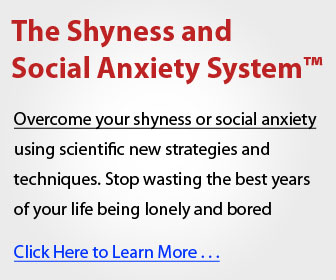In the world of personal development, positive thinking is often hailed as the holy grail of happiness, success, and emotional well-being. From bestselling self-help books to viral motivational speeches, the message is clear: think positive, and everything will fall into place.
But what if this well-intentioned advice sometimes causes more harm than good?
Yes, you read that right.
While positive thinking can be a powerful tool for resilience and goal achievement, there are hidden downsides that many people—especially those struggling with anxiety—rarely talk about. In this article, we’ll explore how and why positive thinking can actually increase anxiety, and what you can do instead to cultivate genuine mental and emotional strength.
The Problem With “Always Be Positive”
Let’s start with the obvious: no one wants to feel bad. Optimism sells because it offers hope. It tells us that we can rewrite our stories, overcome adversity, and live a better life. And much of that is true—a positive mindset does have value.
But when positive thinking becomes a rigid expectation rather than a flexible tool, it turns toxic.
1. The Pressure to Be Happy All the Time
We live in a culture that idolizes happiness. Social media is filled with curated highlight reels, influencers share morning routines that promise success, and we’re constantly fed slogans like:
- “Good vibes only.”
- “Just think positive.”
- “Happiness is a choice.”
The underlying message? If you’re not happy, it’s your fault.
For someone already battling anxiety, this narrative creates a crippling pressure to feel good—even when it’s not authentic. Instead of acknowledging uncomfortable emotions, people suppress them in favor of a forced smile. This emotional suppression only worsens anxiety in the long run.
2. Invalidating Real Emotions
Positive thinking can sometimes serve as a form of emotional gaslighting. When you’re told to “look on the bright side” during genuinely difficult moments—like grief, loss, or failure—it sends a message that your feelings are invalid or unacceptable.
This disconnect between what you’re feeling and what you’re “supposed” to feel creates cognitive dissonance, a psychological state that can significantly increase stress and anxiety.
3. The “Positivity Paradox”
Here’s a paradox most people don’t realize:
The more you try to force positive thoughts, the more negative emotions you may experience.
This phenomenon is backed by research in psychology. A study published in the journal Emotion found that people who felt pressure to feel happy actually reported feeling more lonely and depressed, especially in high-stress environments.
Why? Because forced positivity creates an internal conflict. You’re essentially lying to yourself about how you feel. This internal dissonance can spark anxiety, reduce self-trust, and lead to emotional burnout.
When Positive Thinking Turns Into Toxic Positivity
Let’s be clear: there’s a huge difference between healthy optimism and toxic positivity.
Healthy Optimism:
- Acknowledges challenges and feelings.
- Looks for solutions with a grounded mindset.
- Encourages growth while honoring reality.
Toxic Positivity:
- Denies or ignores negative emotions.
- Shames others (or yourself) for feeling down.
- Insists on happiness at all costs.
Toxic positivity isn’t just annoying—it can be downright dangerous. It can:
- Discourage people from seeking help.
- Worsen mental health conditions like anxiety or depression.
- Create emotional disconnection in relationships.
The Role of “Emotional Bypassing”
One of the most subtle ways positive thinking causes anxiety is through emotional bypassing—using positivity to avoid dealing with painful truths or unresolved trauma.
Statements like:
- “Everything happens for a reason.”
- “It could be worse.”
- “At least you’re alive.”
…may seem helpful on the surface, but they often serve to dismiss the deeper emotional work that needs to be done. When emotions are consistently bypassed, they don’t disappear—they get stored in the body, eventually manifesting as chronic anxiety, tension, or burnout.
Why This Affects High Achievers and Personal Growth Enthusiasts
If you’re reading this, chances are you care about self-improvement. Ironically, those who are most committed to personal development are often most vulnerable to anxiety from positive thinking.
Why?
Because you set high standards for yourself. You expect growth. You’re constantly striving for better. So when you hit emotional turbulence, your inner critic might say:
- “You should know better.”
- “You’ve read all the books—why are you still anxious?”
- “Just be grateful and get over it.”
This self-blame, disguised as motivation, creates a loop of toxic self-judgment—leading to even more anxiety.
What To Do Instead: Embrace “Emotional Authenticity”
So how do we balance the benefits of positive thinking without falling into its anxiety-inducing trap?
Here’s the answer: emotional authenticity.
1. Name What You Feel
Instead of running from your emotions, name them. Research shows that naming emotions reduces their intensity. Say out loud:
- “I’m feeling overwhelmed.”
- “I’m anxious and don’t know why.”
- “I’m scared things won’t work out.”
This is not weakness. It’s emotional intelligence.
2. Practice “Both-And” Thinking
Rather than forcing positivity, allow space for dual emotions. You can feel anxious and hopeful. You can be grateful and frustrated.
This “both-and” mindset allows you to:
- Hold space for complexity.
- Build emotional resilience.
- Stay grounded in reality.
3. Use Affirmations Responsibly
Affirmations can be powerful—when used correctly. Avoid unrealistic statements like:
- “I am always happy.”
- “Nothing can hurt me.”
Instead, try:
- “I can handle whatever comes my way.”
- “It’s okay to feel anxious and still move forward.”
- “I trust myself to grow through this.”
4. Create Safe Spaces for Vulnerability
Whether through journaling, therapy, or trusted friends, make space for emotional honesty. The more you accept your emotions without judgment, the less power they have over you.
Authenticity Over Artificial Positivity
The goal of personal development is not to become a robot that’s always happy. The goal is to become fully human—to feel the full range of emotions, navigate them with grace, and grow through the process.
Positive thinking has its place. But when it becomes a shield that hides your true self, it does more harm than good.
So the next time you’re tempted to slap a smile over your anxiety, pause and ask:
“What am I really feeling right now—and what would it mean to be honest about it?”
Because true growth doesn’t come from pretending everything is okay. It comes from having the courage to face what’s not—and choosing to grow anyway.



